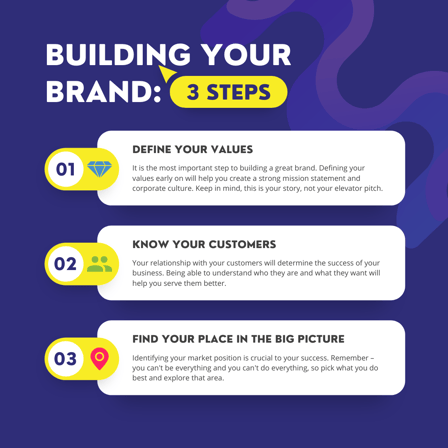Software Customization Required for Less Than 1/10th of 1% of Organizations
As a consultant for several years, if not decades, I have met the phrase “our business is unique”,...

What is a brand? A brand is more than your brand assets, like your name, logo, website, advertising, brochures, or products and services. A brand strategy encompasses your organization's "why" or, in other words, your organization's purpose and character.
As Simon Sinek states, "Very few people or companies can clearly articulate WHY they do WHAT they do. By WHY I mean your purpose, cause, or belief - WHY does your company exist? WHY do you get out of bed every morning? And WHY should anyone care? People don't buy WHAT you do, they buy WHY you do it."
Your brand represents your promise to your client or customer, and if you make good on that promise, you will develop brand loyalty. A brand strategy aligns all areas of your organization, and a brand strategy clarifies where your organization is headed; what you are trying to achieve; and provides a map on how to get to where you want to go.
There is truth to the cliché, "Actions speak louder than words." Every action made by an organization must represent the brand because any action that opposes the brand's message or promise causes customers or clients to distrust the brand. A well-defined and executed brand strategy affects ALL areas of a business, and a brand strategy directly correlates with client or customer needs, emotions, and competitive landscapes. Therefore, everything an organization does affects the brand in some way, either negatively or positively.

At MPWRSource, we emphasize the importance of employees in brand strategy. While establishing consistency in communications and brand assets is important, it is equally important for employees to be well versed in how to communicate with prospective and existing customers and about the brand. All employees serve as brand ambassadors. For example, if a brand is playful and approachable, then a client or customer expects to engage with a playful and approachable employee.
A successful brand strategy incorporates employee branding, which means getting employees to buy in and reflect the mission, values, and vision of the organization. If employees can do this, they will be able to convey those messages to customers/clients, stakeholders, prospects, and their fellow employees. This is extremely important because, according to Edelman Trust Barometer, the employee voice is 3x more credible than the CEO's when it comes to talking about working conditions in that company. That's right. Employee branding also helps to retain and attract employees that are the best fit for your brand.
Some ways to build an employee branding program include:
According to Forbes, presenting a brand consistently across all platforms can increase revenue by up to 23%. As you can see a well-thought brand strategy implemented consistently drives revenue.
Dave Buck, professional coach and CEO of Coachville said, "Your brand is a gateway to your true work. You know you are here to do something - to create something or help others in some way. The question is, how can you set up your life and work so that you can do it? The answer lies in your brand. When you create a compelling brand, you attract people who want the promise of your brand - which you deliver."
As a consultant for several years, if not decades, I have met the phrase “our business is unique”,...

MPWRPeople, a nonprofit that educates and connects leaders to empower the people, organizations,...